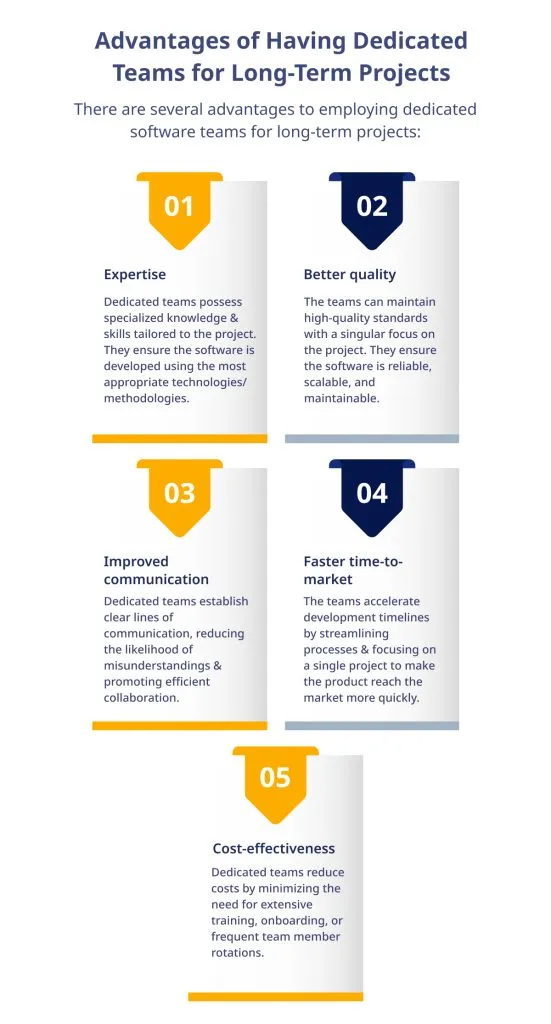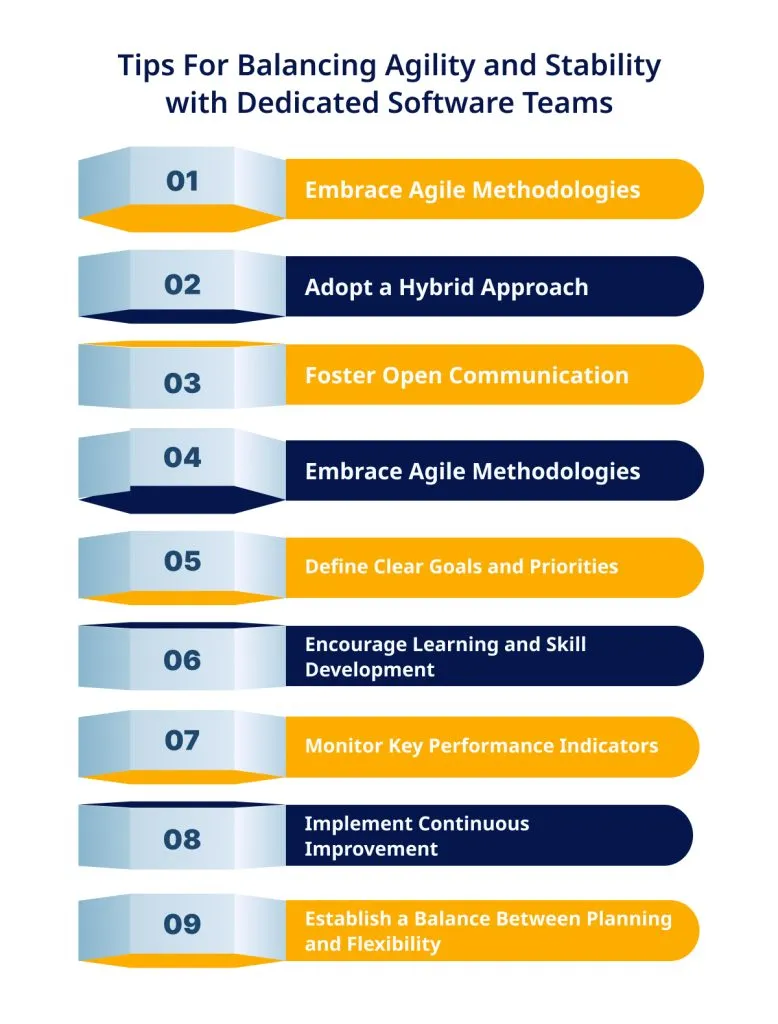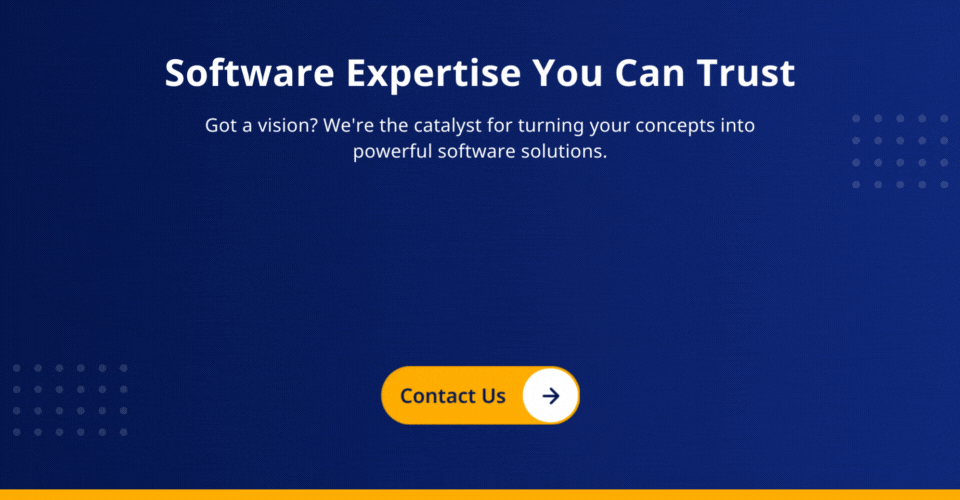Is your business facing the constant challenge of striking a balance between agility & stability?
If yes, it’s time to opt for sustainable software development with dedicated software teams as they effortlessly navigate the delicate balance between innovation and reliability. In a realm where change is the only constant, dedicated software teams hold the keys to unlocking unparalleled achievements.
Read this blog which will take you on a journey of balancing agility and stability, uncovering the strategies and insights that empower these teams to conquer challenges, captivate customers, and catapult themselves to the summit of long-term success.
Understanding Agile Development
Agile development is a modern and iterative approach to sustainable software development. It stands in contrast to traditional linear methodologies like the Waterfall model. It emphasizes flexibility, collaboration, and customer satisfaction. Agile is built upon four core principles, as outlined in the Agile Manifesto:
- Individuals’ interactions over processes & tools: Agile prioritizes effective communication and collaboration among team members, valuing human interactions above rigid processes or tools.
- Comprehensive documentation: Agile focuses on delivering functional software quickly rather than getting bogged down in extensive documentation.
- Collaboration over contract negotiation: Agile encourages close collaboration with customers, ensuring their needs and feedback are continuously incorporated into the development process.
- Responding to change over following a plan: Agile embraces change, allowing teams to adapt and pivot as needed rather than adhering to a fixed plan.
Get free consultation and let us know your project idea to turn it into an amazing digital product.
Agile development offers numerous benefits that contribute to the balance between agility and stability in dedicated software teams:
- Faster time to market: Agile’s iterative approach allows teams to deliver working software more quickly, enabling businesses to respond to market demands and stay ahead of the competition.
- Improved collaboration: Agile fosters a collaborative environment, promoting teamwork and communication among team members and customers.
- Enhanced adaptability: Agile’s flexibility allows teams to respond to changing requirements, ensuring that the final product meets customer needs and expectations.
- Continuous improvement: Agile encourages regular reflection and adaptation, enabling teams to learn from their experiences and continuously improve their processes and products.
However, Agile development also has its limitations:
- Lack of predictability: Agile’s flexible nature can make it difficult to accurately predict project timelines and budgets.
- Incomplete documentation: The focus on working software over comprehensive documentation can sometimes lead to insufficient documentation, making it challenging for new team members to get up to speed or for future maintenance.
- Not suitable for all projects: Agile may not be the best fit for projects with strict regulatory requirements or requiring a high degree of upfront planning and design.
By understanding Agile development’s principles, benefits, and limitations, dedicated software teams can strike the right balance between agility and stability, ensuring long-term success in the dynamic world of technology.
Also Read: A Complete Guide On Hiring Dedicated Development Team
Emphasizing Stability in Software Development
While adaptability is crucial in today’s business environment, stability holds equal importance in guaranteeing the long-term success of dedicated software teams.
Stability pertains to software products’ dependability, resilience, and maintainability and the methodologies employed to create them. It lays a strong groundwork for teams to build upon and innovate, promoting sustainable software development and customer satisfaction.
Essential elements of stability include:
- Reliable quality: Stable software is marked by top-notch code, comprehensive testing, and minimal flaws, ensuring a smooth user experience and reducing the necessity for regular updates or repairs.
- Scalability: Stable software is engineered to support growth and transformation, enabling businesses to scale and adjust without sacrificing performance or features.
- Maintainability: Stable software is well-documented and organized, simplifying the process for teams to comprehend, alter, and maintain it over time.
Potential Hazards of Overemphasizing Agility Over Stability
While adaptability is critical for staying current with the ever-evolving technology landscape, prioritizing it at the cost of stability can introduce potential hazards:
- Technical debt: Favoring speed over quality can lead to shortcuts, makeshift solutions, and subpar approaches that accumulate as technical debt. This debt can hinder future development, raise maintenance expenses, and adversely affect software quality.
- Vulnerable systems: Overvaluing agility can make vulnerable systems susceptible to errors, crashes, or security breaches, damaging user trust and satisfaction.
- Unsustainable tempo: Continuously pursuing agility can place immense strain on software teams, causing burnout, high attrition, and a decrease in overall productivity and morale.
Dedicated software teams can secure long-term success by achieving the optimal balance between adaptability and stability, delivering cutting-edge solutions that endure time. This harmony enables organizations to stay ahead of the competition while maintaining a robust foundation, encouraging sustainable software development, and surpassing customer expectations.
Get free consultation and let us know your project idea to turn it into an amazing digital product.
The Role of Dedicated Software Teams
Teams dedicated to one project often comprise developers, designers, testers, and project managers, all to complete a single project. These teams help increase efficiency, foster improved communication, and guarantee the necessary focus for the project is available.
You can hire a team of developers who are specialized professionals working exclusively on a specific project/product, ensuring sustainable software development.
How Dedicated Teams Enhance Stability & Efficiency?
The dedicated software team plays an essential part in striking a balance between agility & stability. The team’s dedication to providing exceptional, reliable, and maintainable software is the key to establishing stability.
- The team obtains a firm grasp of the product, its needs, and any issues it may face by focusing on a single project.
- By concentrating on one task, the group can set aside enough resources and time to guarantee the software is thoroughly tested, fully documented, and able to grow.
- Dedicated teams can stay current with the latest advancements in their industry and put the most efficient techniques and technologies into practice.
Get free consultation and let us know your project idea to turn it into an amazing digital product.
Benefits of Balancing Agility and Stability
Adaptability: Balancing agility & stability allows businesses to adapt quickly to changing market conditions, customer demands, and emerging trends/technologies.
Innovation: Businesses foster an environment that encourages innovation by balancing agility and stability.
Customer Satisfaction: This balance enables businesses to deliver customer value more efficiently and effectively.
Faster Time to Market: By streamlining processes, breaking down silos, and promoting cross-functional collaboration, organizations can shorten development cycles and rapidly deliver products/services to customers.
Risk Mitigation: While agility enables rapid responses and adaptations, stability provides a solid foundation for risk assessment, quality assurance, and compliance. The combination of both allows businesses to navigate uncertainties.
Employee Engagement & Retention: A balanced approach to agility and stability fosters a positive work environment that promotes employee engagement and retention.
Challenges Found In Balancing Agility and Stability & Solutions
Achieving the delicate equilibrium between agility and stability in dedicated software teams can be challenging. Understanding and addressing these challenges is essential for long-term success.
Challenge #1:
Resistance to Change: Introducing agility into established processes and workflows can encounter resistance from team members, stakeholders, and organizational culture.
Solution: Overcoming resistance requires effective communication, collaboration, and a shared understanding of agility’s value. It involves fostering a culture of continuous learning and creating opportunities for team members to develop new skills.
Challenge #2:
Scalability: Ensuring alignment and collaboration among multiple teams and maintaining consistency in processes and practices become critical challenges.
Solution: Scaling agile practices across large organizations requires careful planning, coordination, and the adoption of scalable frameworks such as SAFe (Scaled Agile Framework) or LeSS (Large-Scale Scrum).
Challenge #3:
Maintaining Stability Amidst Change: Rapid iterations and frequent changes can disrupt stability, leading to challenges in maintaining quality, reliability, and security.
Solution: Organizations must implement robust quality assurance processes, invest in testing and automation, and establish clear guidelines for maintaining stability while embracing agile practices.
Challenge #4:
Balancing Short-term Wins & Long-term Stability: Agile methodologies often prioritize short-term wins and responsiveness to immediate customer needs. However, long-term stability and technical debt management can be inadvertently neglected in pursuit of agility.
Solution: Striking a balance between quick iterations and long-term maintainability is crucial to prevent accumulating technical debt that hampers stability and scalability in the future.
Challenge #5:
Managing Expectations: Stakeholders, including customers and management, may have different priorities and perspectives on balancing agility and stability.
Solution: Clear and ongoing communication, setting realistic expectations, and involving stakeholders in decision-making can help align everyone toward a shared understanding of the benefits and trade-offs involved.
Tips For Balancing Agility and Stability with Dedicated Software Teams
Achieving the right balance between these factors can lead to sustainable software development and satisfied clients. Here, you will explore valuable tips to help you strike the perfect equilibrium.
Embrace Agile Methodologies
Adopting agile methodologies such as Scrum or Kanban can provide a framework for balancing agility and stability. These methodologies promote iterative development, regular feedback, and continuous improvement.
By following agile practices, you can respond effectively to changing requirements while maintaining stability through established processes.
Adopt a Hybrid Approach
Combining elements of agile methodologies with traditional project management practices can help strike the right balance. This hybrid approach allows teams to:
- Maintain flexibility and adaptability while adhering to established processes
- Encourage innovation while ensuring quality and predictability
- Foster collaboration and communication while maintaining clear roles and responsibilities
Foster Open Communication
Encourage open and transparent communication within your software team. Ensure team members feel comfortable sharing their ideas, concerns, and challenges. This enables quick feedback loops, enhances collaboration, and promotes agility.
At the same time, establish clear channels for reporting and resolving issues to maintain stability.
Define Clear Goals and Priorities
Clearly define project goals, objectives, and priorities from the outset. Regularly revisit and refine these goals as needed to adapt to evolving circumstances without sacrificing stability. This allows the team to focus on essential tasks and ensures alignment between agility and stability.
This involves:
- Aligning team goals with organizational objectives
- Regularly reviewing and adjusting priorities based on changing circumstances
- Ensuring that team members understand their roles and responsibilities in achieving these goals
Encourage Learning and Skill Development
Promote a culture of continuous learning within your dedicated software team. Encourage team members to enhance their skills, stay updated with emerging technologies, and share knowledge. This enables agility by fostering adaptability and innovation.
It also contributes to stability by ensuring the team possesses the necessary expertise to deliver reliable solutions.
Monitor Key Performance Indicators
Monitor relevant KPIs to gauge the performance and progress of your software team. Measure factors such as project velocity, quality metrics, and customer satisfaction. This data helps you assess your approach’s effectiveness in achieving agility and stability.
Use the insights gained to make informed decisions and course corrections.
Implement Continuous Improvement
Continuous improvement is essential for maintaining the right balance between agility & stability. This can be achieved by:
- Regularly reviewing and refining processes and practices
- Encouraging team members to share feedback and suggestions for improvement
- Implementing changes incrementally to minimize disruption and maintain stability
Establish a Balance Between Planning and Flexibility
Strive for a balanced approach to planning and flexibility. While planning provides stability and structure, excessive rigidity can hinder agility.
Encourage flexibility by embracing changes when justified, but ensure they are assessed and incorporated thoughtfully to maintain stability. You can regularly review and adjust plans based on feedback and new insights.
Get free consultation and let us know your project idea to turn it into an amazing digital product.
How ValueCoders Achieved Balance Between Agility and Stability?
We have successfully balanced agility & stability by implementing agile practices with a strong focus on quality control. At ValueCoders, we embraced the Scrum methodology while incorporating rigorous testing and quality assurance processes for sustainable software development.
Approach We Follow:
- We adopted the Scrum framework to promote iterative development and quick response to changing requirements.
- We implemented automated testing and continuous integration to ensure stable and reliable software.
- We established a dedicated quality assurance team to maintain high-quality standards throughout development.
- We prioritized regular feedback loops with stakeholders to validate and refine the software’s functionality.
Lessons Learned:
- Balancing agility and stability requires a proactive approach to address potential risks and ensure software reliability.
- Effective collaboration between development, testing, and quality assurance teams is critical for maintaining stability while embracing agility.
- Continuous learning and skill development foster agility by enabling the team to adapt to new technologies and market trends.
- Embracing a flexible mindset and adapting quickly to customer needs helps maintain stability without compromising agility.
- Regular reflection and process improvements contribute to a more balanced and efficient development environment.
Conclusion
Balancing agility and stability is essential for long-term success with dedicated software teams. Organizations can achieve the perfect equilibrium by adopting a hybrid approach, setting clear goals and priorities, implementing continuous improvement, fostering collaboration and trust, and investing in training and development.
This balance enables software teams to adapt to changing market conditions while maintaining a solid foundation for growth and scalability, ultimately driving long-term success for sustainable software development.
ValueCoders has been a leading software development company in India since 2004. Hire a team of developers from ValueCoders who have been serving clients globally for the last 18+ years & delivering excellent software products.











